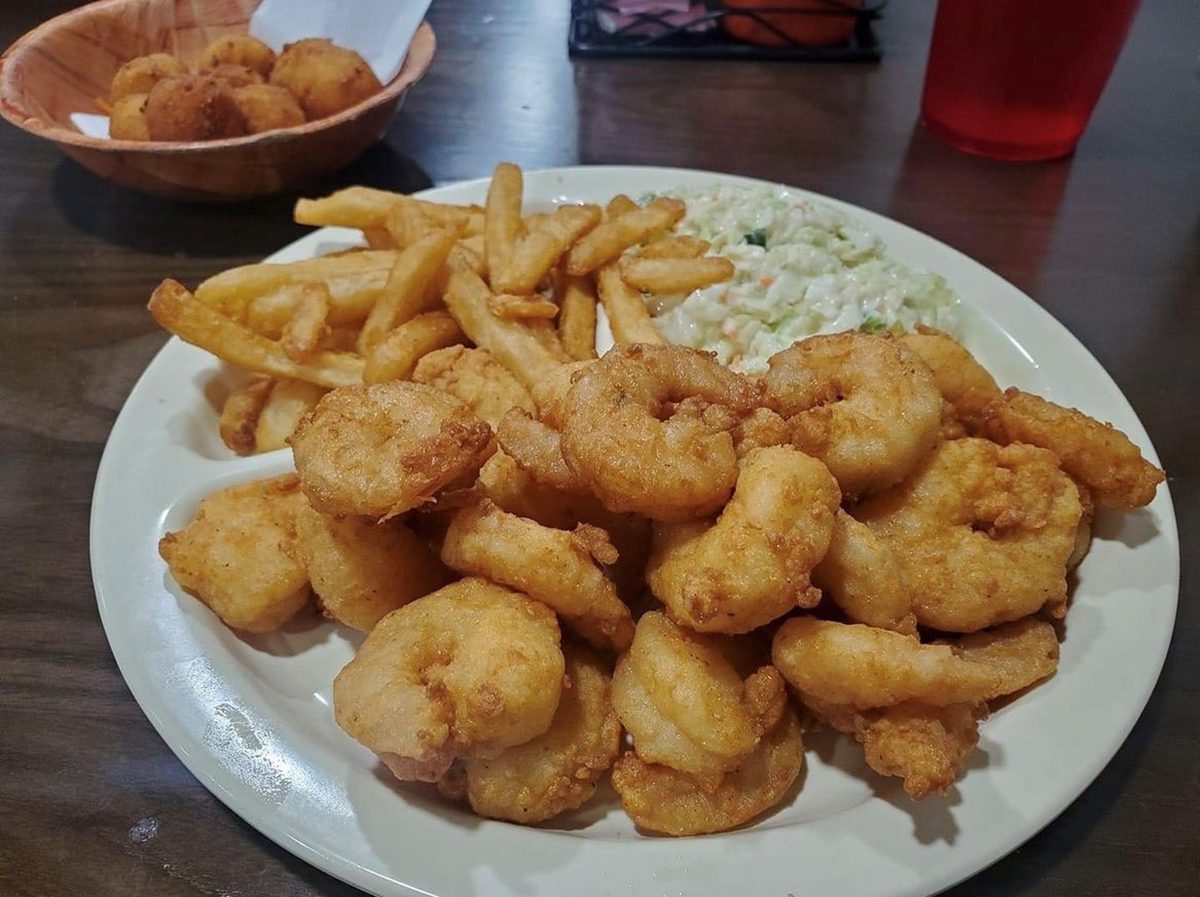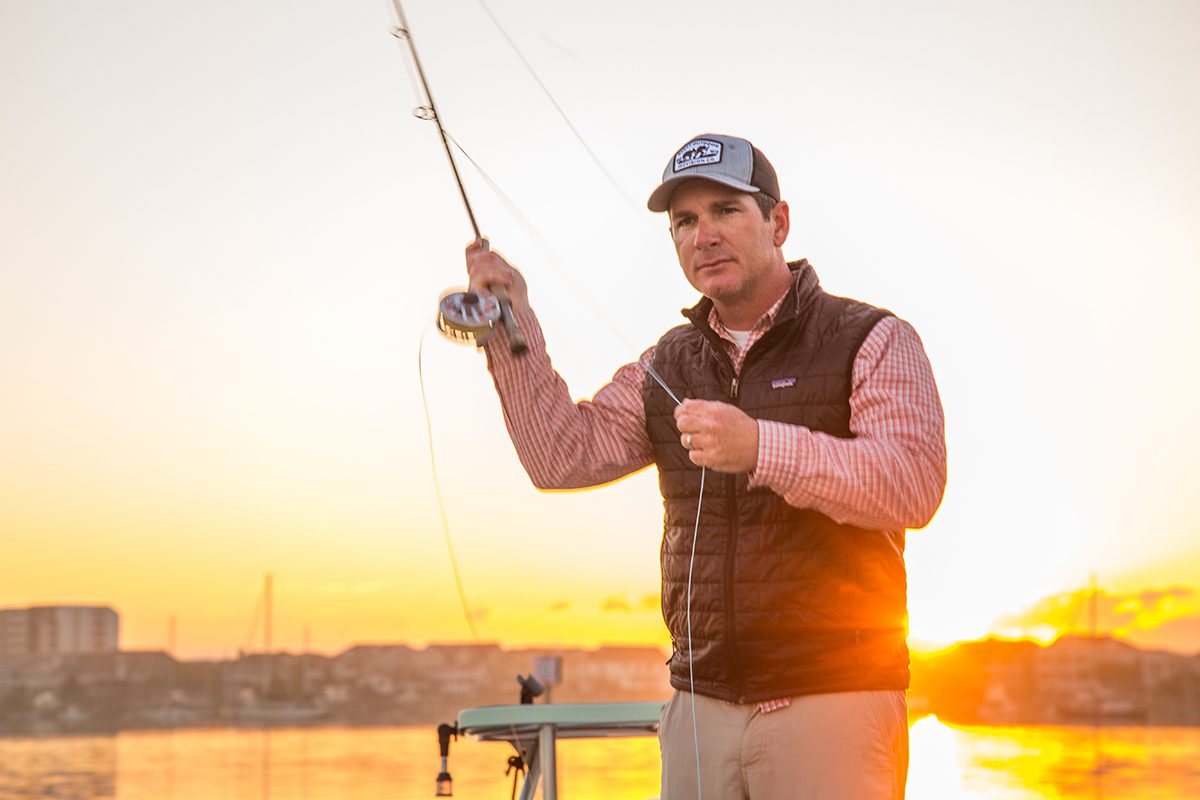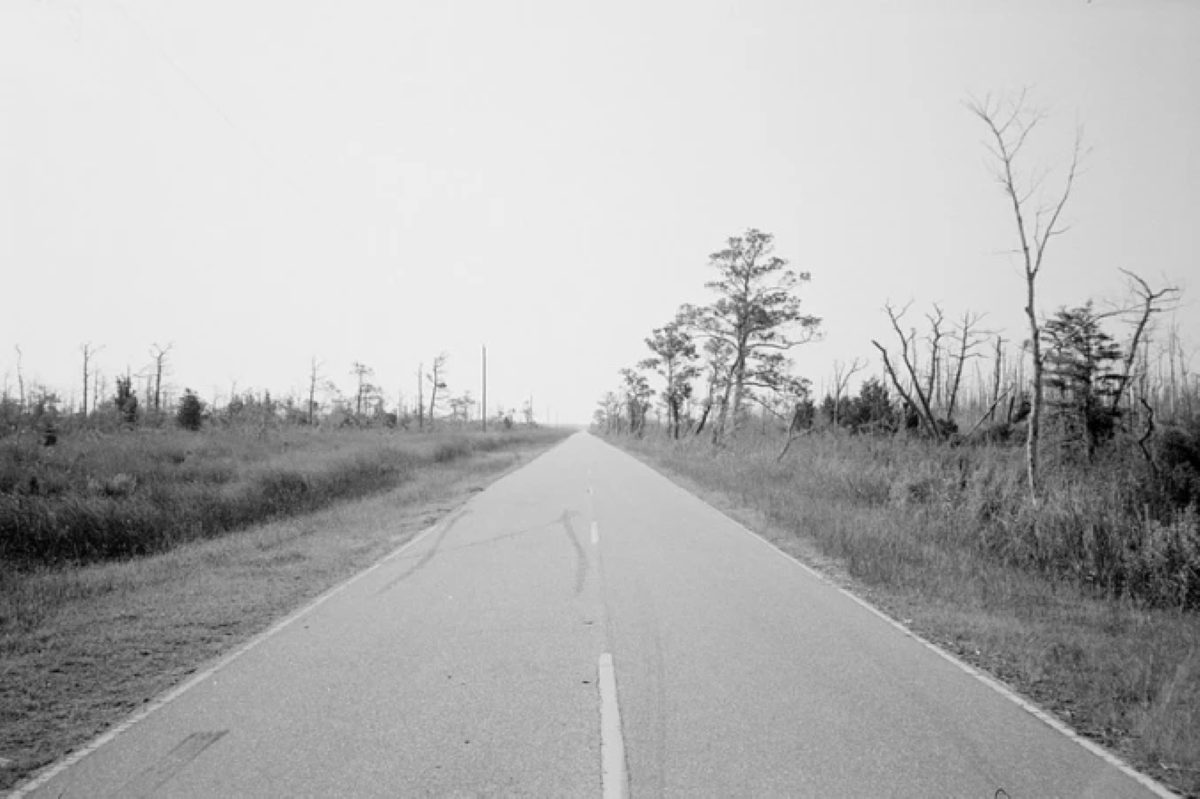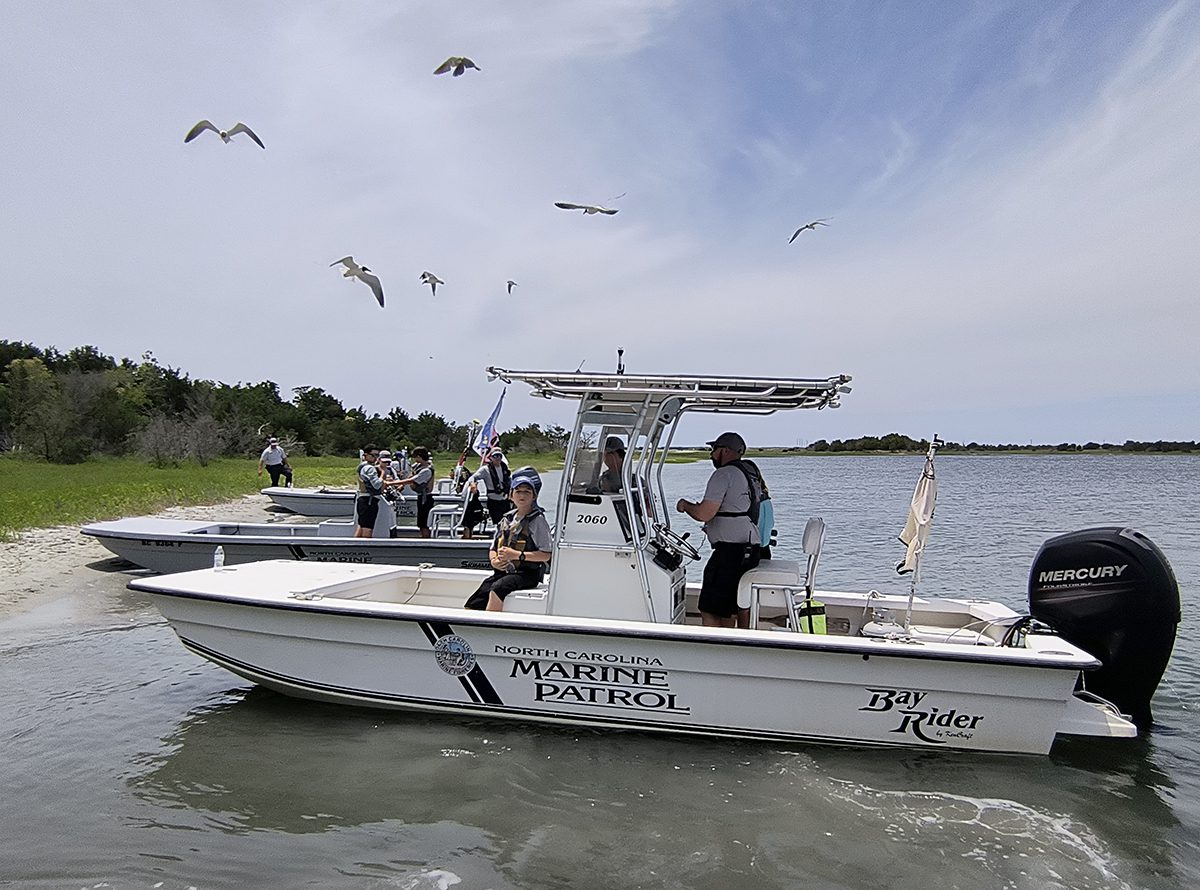
WILLISTON – It’s probably safe to say that relatively few women – or men – would start an oyster seed nursery at age 65. It’s probably even safer to say that few if any women who deign to take on that task and degree of risk would buy a big, decrepit cinder block building, renovate it and hope that the business will help revitalize an entire community, albeit a small one.
But Susan Fulcher Hill is doing it in Williston. A few years ago she and her husband, Robert, purchased the run-down, long-abandoned 8,000-square-foot Willis Brothers Seafood building on U.S. 70 at Jarrett Bay. After years of learning and planning, in late July they “planted” their first tiny larvae – 3 million of them – with the goal of selling seed oysters to the growing number of oyster farmers around the state.
Sponsor Spotlight
Will the business make money?
“We certainly hope so,” Hill said recently. “But it’s like anything else that involves Mother Nature: You don’t know. We should know by the end of August.”
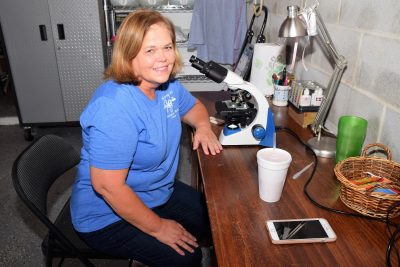
But the story of how Susan Hill got to this point is as interesting as the question of whether the couple’s business will succeed.
A native of Williston, she’s the daughter of Donald Fulcher, who made a career on the water. He was a commercial fisherman and for many years was the chief engineer for the Eastward, the first research vessel used by the Duke University Marine Laboratory on Pivers Island. So she grew up with salt water in her blood, and with an abiding love for all things marine.
Sponsor Spotlight
By the time it was time to go to college, Susan headed to East Carolina University to major in marine biology. She ended up transferring to Vanderbilt University and graduated with a degree in biology, then headed off to Brigham Young University in Utah, where she earned a master’s in food science and nutrition.
Eventually, she met Robert, they got married and founded a company, Diabetes Care and Education Inc., in Greenville, South Carolina.
“I was diagnosed with diabetes when I was 19,” Susan said.
So starting and running a company that helped other diabetics obtain supplies, support and information seemed as natural as a Williston native getting involved in seafood. And the company was very successful. Eventually, they had offices in five states, and the headquarters ended up in Louisville., Kentucky, where the couple stayed for 20 years.
When they sold the business in 2007, they retired, and spent much of the next 10 years doing volunteer work and missions for their church, The Church of Jesus Christ of Latter-day Saints.
But all along, Susan said, there was a nagging desire to return to her first love, marine biology, in some way, and a desire to come home to Down East Carteret County.
Eventually, opportunity presented itself in the form of that old Willis Brothers building, which locals just call “Elmer’s clam house,” she said.
“When I was growing up, it was the hub of eastern Carteret County,” Susan recalled. “Dozens and dozens of people worked there over the years. Williston used to have a post office and a store, and we’d walk to the store and get a soda, go to the post office and get the mail, then go to the clam house and watch the boats at the boatworks. There are a lot of memories for me and many other people in that place, a lot of history, and a lot of emotional connections.”
The ‘Clam King’
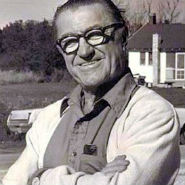
Elmer Willis was known far and wide as “The Clam King.”
According to a 2014 CRO article by Frank Tursi, “Willis quit school after the eighth grade to help his father fish commercially. He left for Norfolk where he worked for a time as an engineer on boats, but he came home to stay in 1939, bringing with him a wife – Pearl Smith of Atlantic – and a 2-year-old daughter, Nancy. Another daughter, Beverly, would be born later.”
Willis opened a general store just past the bridge crossing Williston Creek. It housed the post office Susan Hill mentioned, and in the early 1940s Willis started the seafood business with his brother, Wesley, who later sold his share to Elmer.
Heinz was the big customer – think clam chowder, although not necessarily the great stuff produced by skilled seafood artist in Carteret’s fishing villages – but Elmer Lewis sold the national company all the clams they used for many years.
Willis Brothers’ clams also went elsewhere in the U.S. besides Heinz in Pittsburgh. Cleveland was a huge market; for some reason clambakes were always big there.
Willis Brothers clams also raised money for local schools for years at clambakes. The business, and Elmer, were integral and important parts of the community and culture of a place that was isolated and self-sufficient. And proud of it.
But Elmer died in a car wreck in 1977 and the clam house closed. A fire destroyed the store and boatworks in the 1990s, and the clam house deteriorated into what Tursi, in his 2014 article called, “frankly, an eyesore.” There were efforts to obtain grants, and talk of a park.
But if it had become an eyesore, it was, as Susan said, one with rich, still vibrant history. And it still kindled emotional connections to times gone by, perhaps better times, for many people, including a Williston native who had been gone a long time and had salt in her blood.
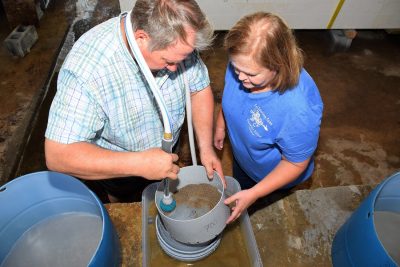
So she put in a bid for the property and got it, and started talking to people. She knew that the state, with a push from the North Carolina Coastal Federation, was getting into oyster production in a big way, building reefs and encouraging oyster farming, both to revive a once-thriving industry and to help improve water quality. One oyster – just one – can filter clean up to 50 gallons of water per day. So Down East Mariculture Supply Co. began to become a reality, slowly.
Susan had found out more than two years ago, at a North Carolina Sea Grant meeting, that there was a shortage of oyster seed for those efforts, and that almost all seed used here comes from Virginia. Buying from Virginia can be time-consuming, as state Division of Marine Fisheries rules require that those larvae or seeds must be tested for disease. So even those are sometimes hard to get.
And that’s when her idea was hatched. A shortage is an opportunity for the adventurous. But there was a lot of work to be done.
“A lot of people said I should tear the building down, but I didn’t want to do that,” Susan said.
Part of the reason was that history, that culture, but part of it was also practical. While most oyster nurseries are outside, Susan said, “At our ages, we didn’t really want to be outside in all the heat and the humidity and the rain and wind.” So they decided to pipe the seawater into the building, where the larvae would be placed in upwellers and grow to the size needed by the state’s oyster farmers.
Hatchery Protocol
Generally, nursery systems pump seawater to provide a constant flow of water and food to the oysters. The designs and locations may differ, but the goal, no matter how it’s done, is to allow the oysters to grow to approximately an inch as quickly as possible. From the nursery, these seed oysters can either be sold to other commercial producers for grow-out or placed in a company’s own grow-out facility. The Hills opted to just sell the seed oysters.
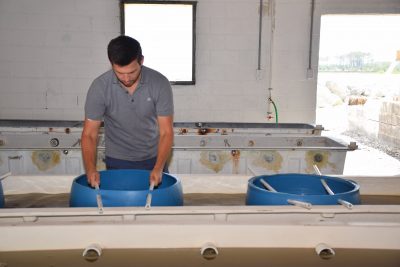
With her knowledge of marine biology and her ties to the commercial fishing industry and its heritage, she knew a good bit of what she needed to know. But Susan studied intensely, taking classes at Carteret Community College, talking to others, reading extensively on the internet and taking a seminar from a renowned expert on the subject, Scott Rickard of Auburn University.
“We’re basically using his protocol,” she said. Most experts say 20 percent of the larvae die before they reach the size oyster farmers need, she said, and that would be 600,000 of that first batch of 3 million. Rickard has much better success, and Susan’s hoping she and Robert do, too. It’s a waiting game, for now.
And it’s taken quite a while just to get to the point in late July when the first larvae went into the water.
The building needed major renovations. Those aren’t finished yet. But after two years, it’s usable, and Susan thinks it looks nice. Inside, the nursery takes up only a small fraction of the space, and she wants to use at least some of the rest of the space to help rebuild those connections so many residents in the area had to the site.
“This isn’t all about us, or even just about us and oyster farmers. It’s also about the community.”
Susan Fulcher Hill
“We’re open to ideas,” she said. “We want people to give us suggestions.”
There’s room for art, and she’s been talking to a mosaic artist. Susan wants an educational, history component to the building, devoted to the area’s rich hunting and fishing culture. She envisions ecotours, students and others visiting to see how the process works, and they might eventually sell supplies.
“We want to help bring some jobs back for people in Williston,” she said. “This isn’t all about us, or even just about us and oyster farmers. It’s also about the community.”
The community, she said, has been positive.
“I think people are excited,” she said. “Everyone seems thankful that we didn’t tear down the building, that we’re making use of it.”
One who is pleased is Elmer Lewis’s daughter, Nancy, who is a Williston native but now lives in Davis.
“I’m very happy with what Susan is doing,” she said. “It certainly looks a lot better, and I’m glad that the building is getting used for something that can help the commercial fishing industry.
“The fishing industry is in such difficult times,” she added. “It’s hard for me to be believe there’s not a fish house in Atlantic. And we had an inspector at our business (Luther Lewis and Son Crab Co. in Davis) and I asked him how many crab-picking places there are in North Carolina now. He had to think really hard and finally said, ‘Less than five.’ At one time, there were 45.”
Ms. Lewis’s company – her husband, James Paul Lewis died in 2016 – used to be involved in all aspects of the crab fishery and operated 10 trawlers, but now just makes crab cakes, which are shipped up and down the East Coast.
So, saving “Elmer’s clam house,” she said, preserves a significant part of a heritage that is rapidly disappearing.
“At one time, just about everybody in Williston worked there,” she said. “There would be a 100 pickers in there.”
Her father, she said, was an innovator, a brilliant man despite having only an eighth-grade education. He built yachts and head boats, and that legacy lives on in Jarrett Bay Boatworks. He started the scallop business in the area, and even developed and patented a scallop-shucking machine.
She’s happy that his legacy lives on in the building.
“It was so sad to see that building in such disrepair,” she said. “I hope Susan has great success.”



